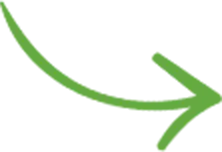Contents
Images are everything for a photography website and, if optimized correctly, can show up high in Google Images and link back to your own site.
That can be a considerable amount of traffic that you’d have ignored otherwise.
This guide will explore all the relevant SEO best-practices to help you rank high in Google Image search, as well as explain why it’s worth the effort.
Why would you want to rank in Google Image search in the first place?
First of all, because a third of all Google searches are performed in Google Image Search (source). That is a huge opportunity, a large amount of traffic up for grabs.
And it’s not just about ranking your images higher in Google Images. If you rank well in Google Images, your photos also show up in regular Google searches!
That’s because Google also has special features (in their regular web search) when it detects you might want to see images (based on the search query).
You can have a big box of images to the right of search results:
… or just a small row of images above search results:
If you use a search query like “pictures of X” or “photos of X” (where the search intent is clear), you might even see an “Image Mega-block”:
These are just a few of Google’s SERP features. Apparently, 12.5% of all web searches on Google actually contain an image pack. That’s huge traffic! And that’s good news for photographers like yourself: that traffic is already primed to look for images.
Yeah, but is it worth the effort? Do people actually land on your site from Google Images?
Let’s deconstruct this: the main concern is whether showing up in Google Image search results actually drives traffic to your site.
When you click on a thumbnail, Google first opens up a full size version of that image, with a button to access the actual web page it’s coming from:

(Google also notoriously removed the “view image” button from image search results, which used to link directly to the image files, to make photos harder to download/steal)
It’s true that many people never actually visit the websites, they just do a bunch of search and access the images from there. And that’s not useful to you as a website owner, you get absolutely no data on that.
That being said, image search SEO is still incredibly useful if…
- you sell image licenses (RM or RF, stock photography)
- you sell photo-based products (calendars, photo books, agendas, etc.)
- you do event photography
In all of these cases, many people will indeed click to visit the website for the images they like in Google image search results.
And most importantly, all these SEO actions will help you rank higher in Google web searches as well! They are not restricted to Google Images, they will help your site altogether.

Without image SEO, Google will have a harder time understanding your site
How this differs from regular SEO
As you probably already know from my in-depth SEO guide, general web-search SEO can be broken down into “on-site” and “off-site”.
With image search SEO, there’s more of a focus on “on-site” ranking elements, which is great news for you, because you can actually implement all these details on your site. Google cares more about relevancy (to the user’s image search query), and less on authority (and the number of back-links your site has).
In plain terms: you can outrank popular sites (in Google image search) if you do your image SEO right.
By the way: in Google Images there is not “first page”, it’s a endless page that automatically adds more image results as you scroll down (usually called “infinite scroll”). So your goal is to help your images rank as high as possible.
Don’t forget that quality still matters. If you have poor images, you can’t really outrank other good images. Google still looks at image popularity, it tracks which thumbnails are more often clicked on in image search results. But generally speaking, engagement and off-site SEO are less-important signals for Google Images, the playing field is more level.
So… let’s get practical:
Image SEO guidelines for ranking in Google Image search
Here are the ranking signals for Google Images (and the image packs in Google web searches):

1. Descriptive image filename
Image filenames should be short (because all URLs should be short), so just stick to 2-4 words separated by hyphens (no underscores or other special characters!).
Take this image for example:
Bad image filename example: SGP_7343_ret_V2.jpg
Better filename: active-senior-rowing-river.jpg
Filenames are not the place for “keyword stuffing”. Just a few hyphen-separated words to describe the image. More on the topic here: SEO guide – 38. Add keywords in image filenames
How do you automate this process?
If using Lightroom, in the export dialog choose “Custom settings” under File Naming, and choose the IPTC field you want to use (usually “Title” or “Headline”)

And then you’ll want to replace all spaces with hyphens in filenames, using a tool like Name Mangler or Renamer (similar tools are available for Windows as well).
Or, a more advanced solution for Lightroom is to use this “Search Replace Transfer” LR plugin, it’s incredibly powerful.
And the “Media File Renamer” plugin can help you speed things up inside WordPress as well.
2. Descriptive image alt tag
Originally used for the visually impaired (accessibility), ALT text is now also used by Google to interpret the contents of the image. Stats show that most popular photography websites don’t have image ALT tags, unfortunately.
ALT tags should be concise (<100 characters) explanations of the image. Use natural language again, not a comma-separate list of keywords. Simply think how you would describe the photo to a visually impaired person.
These image attributes are only visible to search engines (or users with screen readers). Here’s how they look like in HTML syntax:
<img src="https://www.domain.com/senior-rowing-river.jpg" alt="Active senior man in a regatta rowing shell" />
3. Detailed image caption (visible on the page)
Captions usually site right below the image (it can stay on the side as well, but it needs to be close to the image). Sometimes this can have more weight than the actual ALT tag.
Don’t forget they are really helpful to human visitors: captions describe an image, they add context, making the image more meaningful for the user. Image SEO should just be a side-benefit of writing captions for humans.
4. Relevant copy close the image
Speaking of stuff in proximity to the image, any text content that you have on the page is relevant to Google.
Text right above or below the image provides useful context for your image.
And if you can display actual image IPTC data, even better: SEO guide – 39. Display image IPTC metadata
Google’s own webmaster guidelines explain it further:
“The page the image is on, and the content around the image (including any captions or image titles), provide search engines with important information about the subject matter of your image. For example, if you have a picture of a polar bear on a page about home-grown tomatoes, you’ll be sending a confused message to the search engines about the subject matter of polarbear.jpg.”
More on this topic here: SEO tips: 22. Add niche keywords in your website copy
5. Keyword-rich page title
Each page on your site should have a H1 heading describing what the page is all about. For image pages, that heading can actually contain the image title (or info stored in the IPTC Heading tag), to further clarity the image contents to Google.
6. SEO-friendly page URL
The individual image pages should also have keyword-rick URLs (or “slugs”):
www.domain.com/gallery-title-here/image-title-here/
Snippet from my in-depth SEO guide for photographers:
“If you’re using PhotoShelter or other image management platforms, everything’s already taken care of: the URL actually contains SEO-valuable info taken from the image’s IPTC info, so Google has something more to “chew”, which is great.”

7. Regular image aspect ratios
Google tends to prefer the common aspect ratios (3:2, 4:3, 16:9, square), both horizontal and vertical. Panoramas are said to be harder to rank for.
8. Medium image dimensions
Harder to optimize small images (<500px), Google doesn’t favor those of course. (There are exceptions).
Larger images (>2500px) should be OK. In fact. Google has the tools to filter by image dimensions:

9. Decent file size
Of course Google wants to prioritize high-quality images, but not at the expense of user experience. So you need to make a compromise between aesthetics and performance.
And don’t forget about mobile-friendliness, your images need to load quickly on small devices, Google cares about that. The file format and the compression level are critical factors here, so be sure to read How to resize, export & compress images for optimal website performance
10. Descriptive anchor texts
When you’re linking internally to some of your own images, be sure to use detailed and relevant link text.
For example, when writing a blog post about your recent wedding shoot, don’t just write: “View images from the wedding reception here“. Instead, say something like: “View images from the wedding reception.”
None of the words were changed, just what’s included in the actual link. Google will understand that the destination is about a “wedding reception” and not about… “here”.
Other image SEO considerations
a) Individual image pages
Most of these tips apply to individual image pages on your site. It’s hard to optimize an entire gallery/portfolio page, because it usually contains a ton of thumbnails with a lot of different pieces of info in there, so Google has a hard time determining relevancy.
But on an individual image page, it’s a whole different story. You can use the same keywords in multiple places (filename, ALT tag, captions, page titles, etc.) to insistingly tell Google what the image is all about.
b) EXIF data
It’s not yet clear if Google users image EXIF data in their algorythm. Here’s what Matt Cutts from Google had to say on the topic: Does Google use EXIF data from pictures as a ranking factor?
So it’s possible that Google might incorporate more EXIF data in the future, allowing people to filter by camera models, focal lengths, etc., or for determining the original source of an image.
Furthermore, if you have a GPS-enabled camera that store geo-coordinates in EXIF data (or if you manually geotagging your images later), that’s great; Google might use that info to identify image locations and provide even more relevant results to its users, though it’s unclear if they do read geo-data and how big of a factor this is at the moment.
c) Watermarks don’t matter
Google’s webmaster guidelines state:
“[…] Some people add copyright text, watermarks, or other information to their images. This kind of information won’t impact your image’s performance in search results, and does help photographers claim credit for their work and deter unknown usage. However, if a feature such as watermarking reduces the user-perceived quality of your image or your image’s thumbnail, users may click it less often in search results.”
d) Unique metadata
If you copy-paste keywords/phrases for multiple images, they’ll matter less in Google’s eyes. As with regular web searches, Google wants to show unique images that are relevant with the user’s query.
As far as Google is concerned, having duplicate content in search results hurts the user experience. Similarly, showing the same photo multiple times is similarly bad, and Google tried to avoid that.
e) Time and effort
Working on all this image SEO is not easy. Do it manually a few times, and then try to work out a routine for whenever you add more images to the site. Try to cover as many of the image SEO factors above as possible.
f) All other traditional SEO factors matter
The over-all domain and page SEO still matters of course, you can’t skip that. Be sure to optimize your entire site’s SEO using this comprehensive guide: The complete SEO guide for photographers: 50 tips to maximize your Google rankings & get found online
g) WordPress attachment pages
WordPress automatically creates an “attachment page” for any image you upload to the media library. And those attachment pages are usually just shallow pages with little-to-no text on them. Not ideal for SEO.
If you’re using the Yoast SEO plugin, the solution is actually just turning a switch on (redirecting attachment pages to media files) under SEO > Search Appearance > Media.

With the option set to “yes”, that attachment page will no longer exist, and it will redirect automatically to the actual JPG file instead.
Just to confirm, I asked John Mueller from Google’s Search Central YouTube Channel, in one of their SEO office-hours, if this is a problem. Here’s what he had to say:
Now do the work. Take the time to optimize the existing images on your site.
Working on this type of SEO requires an image-by-image process. If you’re automating it (by repeating the same captions and ALT tags), you’re doing it wrong. Each image deserves its own unique metadata, and Google will “appreciate” that.
It’s partly the work of writing all the metadata, and partly the technical work of entering all that data into the site.
In WordPress, you can of course add parts of the info directly in the site, by just editing the images in your Media Library

Example of metadata fields to describe image in WordPress Media Library
To update image filenames, use the Media File Renamer plugin.
And don’t forget about file sizes. Even if you added great metadata, the image should not slow down the page too much (poor performance undermines any other SEO efforts).
So if you need to replace and existing image (by uploading a new one it its place – with a lower file size, new pixel dimensions, etc.), use the Enable Media Replace plugin.
After doing all the basic image SEO, you can take it one step further with keyword research
Probably the best tool for the job is MOZ’s Keyword Explorer
Let’s take this sample Google web search:
Now let’s perform the same search in Keyword Explorer and go to “SERP Analysis”:
You can immediately see the stats for the 12 images from the “image mega-pack”.
Then, if you head over to their “Keyword Suggestions” tab, you’ll get inspiration for your metadata (ALT tags, captions, etc.)
And you’ll generally get a sense of the traffic volume, which will help guide you what images to publish on your site next.
If you spend even more time doing this type of keyword research, you can even find out good photo opportunities: you’ll know what personal photo projects to focus on nest.
At the very least, do an “image SEO audit” of your existing site. Most importantly, see how you can improve your individual image pages, by including as many of the ranking signals I listed above.
Submit an image sitemap to Google
Once your optimized your site, don’t forget you can send Google a special XML sitemap containing the location of all your site images. This can sometimes speed up the indexing process and give you better changes to rank higher in Google Images. It can also help Google identify images that would otherwise not be crawled (like images loaded dynamically by Javascript code).
Learn about image sitemaps and, if using WordPress, install a plugin like “Advanced Image Sitemap” or “Udinra All Image Sitemap” to help you generate the sitemap. Then submit it to Google Search Console (under Sitemaps)
But if you’re already using the Yoast SEO plugin (which you should!), you’re all good, it’s already including images in your sitemap.
If you’re not using WordPress, there are tools out there that can crawl your site and generate the sitemap: Screaming Frog or DYNO Mapper.
How to track your results
A great free tool to track your progress is Google Search Console:

Head over to the Status > Performance report and then set the “Search Type” to be “Image”.
This will give you a great overview of your results, allowing you to also drill down by using their other files (filtering by pages, viewing the queries you’re ranking for, filtering by country or device etc.)
What about Google Analytics? Well… you can’t really use it to track traffic from Google Images (as most of it is marked under “google/organic”)
Further reading
- New Google Search Console design and user interface: here’s what changed and which reports are most useful
- How to Rank in Google Image Search – Whiteboard Friday (Moz)
- Image SEO: The Ultimate Step-by-Step-Guide For Ranking In Google Images (SEOSherpa)
- Image SEO: Optimizing images for search engines (Yoast)
- How to Perform an Image Optimization Audit (Moz)
- Image publishing guidelines (Google Search Console help)
- How to Rank First on Google Images
- 10 Must Know Image Optimization Tips
Conclusion + what the future brings for Google Image search
This has been a dense and detailed guide on image SEO. As with regular website SEO, it does take some work, for sure. But it’s a traffic source that’s often neglected by photographers.
Make no mistake, image recognition is just around the corner. Google will soon start “understanding” images, and also using that to help rank images properly (if they haven’t already started doing that).
You can actually test Google’s Cloud Vision API, just trag an image to the “Try the API” section to see how well it detects objects and faces in images.
Facebook is not far behind either, reports says it’s already creating image captions automatically.
We can expect major breakthroughs in this field in the years to come. Until then, Google relies on you to make sense of your photos. If you do, it will reward you with more traffic.
People like to search for images, and your text content and image metadata can help them find yours. So don’t underestimate the power of Google Image search.
Recommended reading: How to optimize images for website performance: image sizes, compression, tools & testing



















